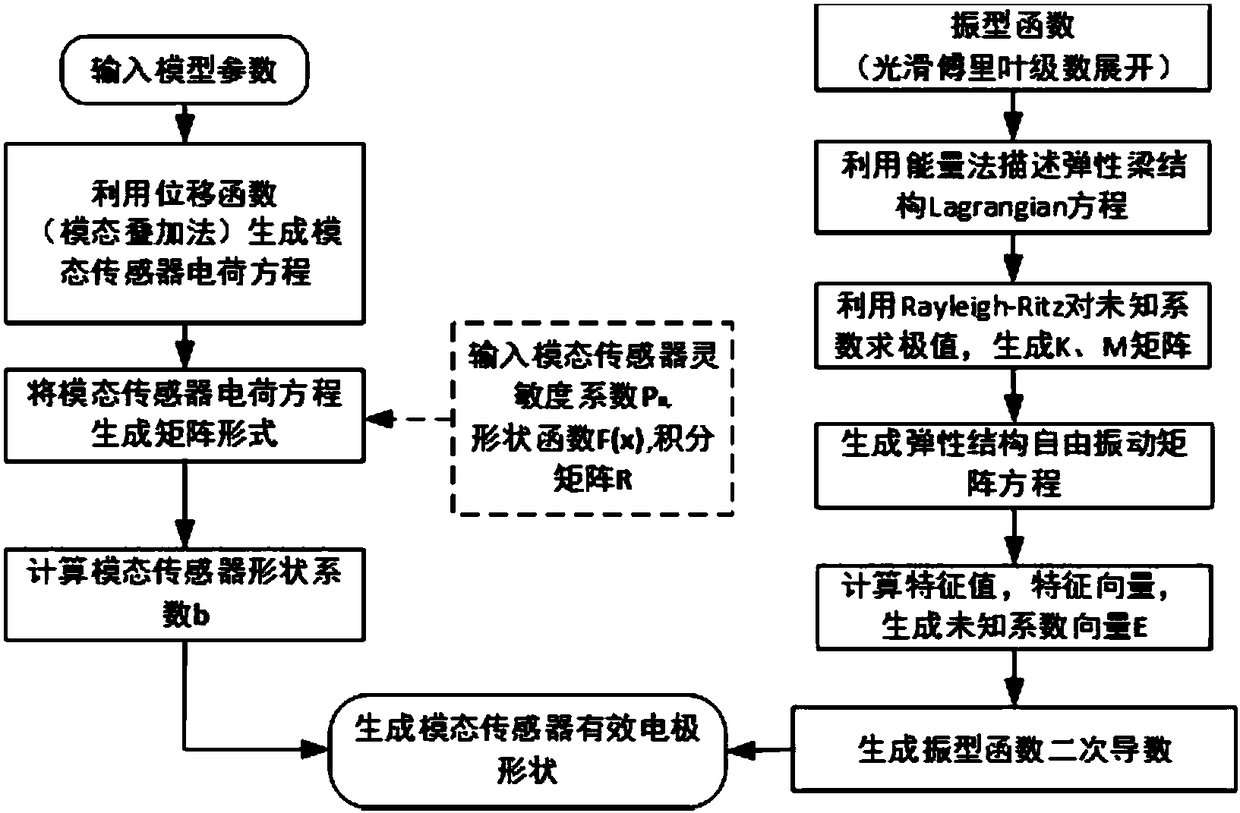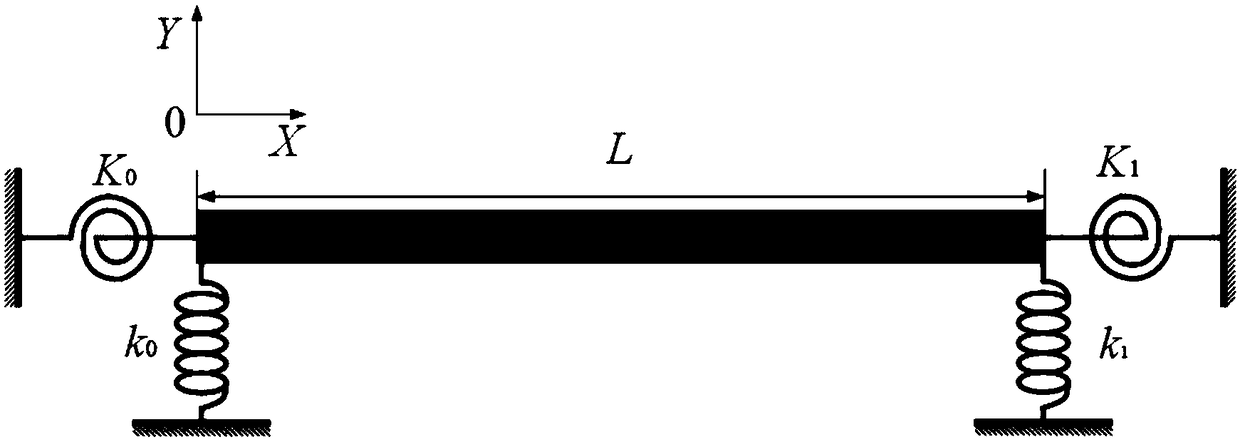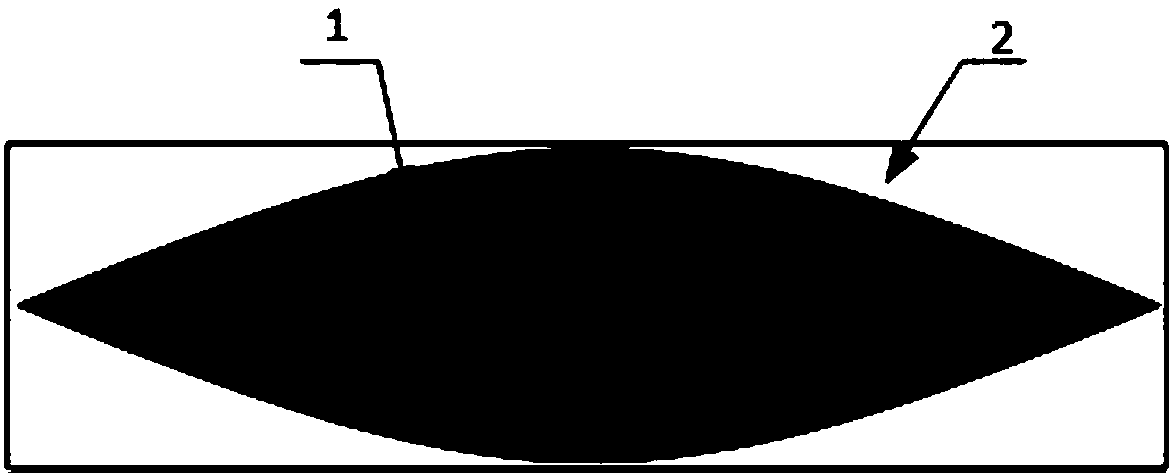Elastic beam structure PVDF modal sensor generation method
A technology of sensors and elastic beams, applied in the field of continuous distributed PVDF modal sensor generation, achieves the effects of simple signal processing, simple calculation, and strong versatility
- Summary
- Abstract
- Description
- Claims
- Application Information
AI Technical Summary
Problems solved by technology
Method used
Image
Examples
Embodiment Construction
[0061] The following examples describe the present invention in more detail.
[0062] The method for generating a PVDF modal sensor with an elastic beam structure of the invention relates to an effective electrode of a PVDF modal sensor that uses a smooth Fourier series method to generate an elastic boundary. The effective electrode generation method of the PVDF modal sensor of the elastic boundary comprises: inputting model parameters, utilizing the displacement function (modal superposition method) to generate the modal sensor charge equation, and inputting the modal sensor sensitivity coefficient P n , the shape function F(x) and the integral matrix R generate the modal sensor charge equation into a matrix form, calculate the modal sensor shape coefficient b and use the smooth Fourier series expansion method to calculate the mode shape function; where, use the smooth Fourier The series expansion method to calculate the mode shape function includes using the energy method to...
PUM
 Login to View More
Login to View More Abstract
Description
Claims
Application Information
 Login to View More
Login to View More - R&D
- Intellectual Property
- Life Sciences
- Materials
- Tech Scout
- Unparalleled Data Quality
- Higher Quality Content
- 60% Fewer Hallucinations
Browse by: Latest US Patents, China's latest patents, Technical Efficacy Thesaurus, Application Domain, Technology Topic, Popular Technical Reports.
© 2025 PatSnap. All rights reserved.Legal|Privacy policy|Modern Slavery Act Transparency Statement|Sitemap|About US| Contact US: help@patsnap.com



